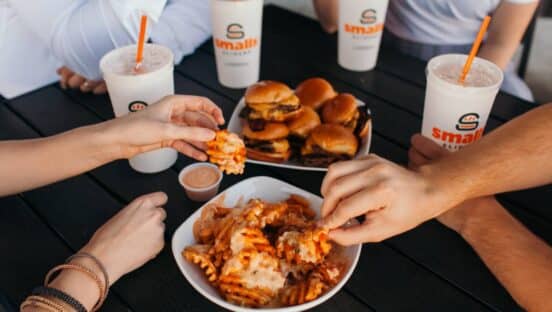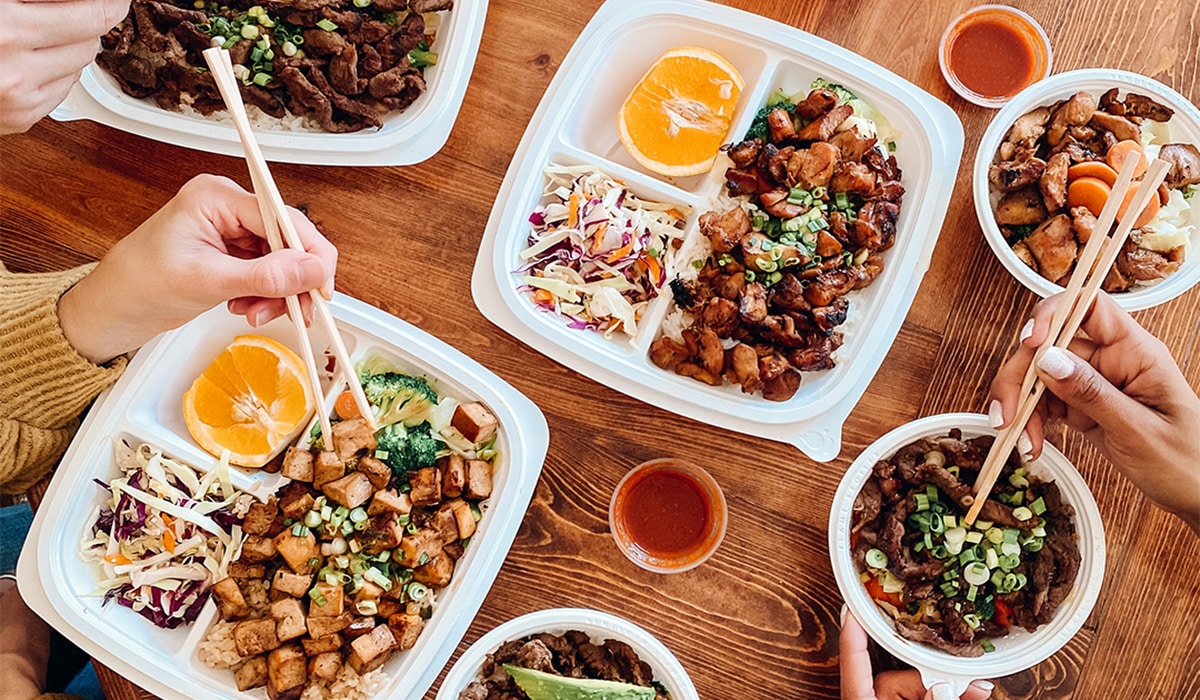More than four months in, the restaurant industry stands at yet another COVID-19 crossroads. Markets nationwide have paused or scaled back reopenings. Some, like New York City, placed an indefinite ban on indoor dining altogether, with open-ended messaging like, “until the facts change and it is prudent to open,” as Gov. Andrew Cuomo said earlier in July. California shuttered dining rooms in 19 counties, a massive swath that covers 70 percent of the state’s population.
Dr. Anthony Fauci, the White House Coronavirus Task Force’s most avid voice, told the Wall Street Journal Wednesday states getting overwhelmed by cases spikes should “tighten things up.” And like directives in mid-March, it fell right on the shoulders of hospitality. He suggested closing bars and said indoor restaurants should do so as well, or “make it such that there’s very good seating.” Bars are dark in Florida, Michigan, and Texas. New Jersey doesn’t allow indoor dining. More recently, Miami-Dade Country in Florida reverted back to no dine-in service.
Naturally, this has dampened the recovery story. In the week ending June 28, total customer transactions at major U.S. restaurant chains declined 14 percent versus the same week in 2019, according to The NPD Group. It marked the second consecutive week figures stalled. The previous period (week ending June 21), transactions fell 13 percent, year-over-year. At that point, it was the first time since April 12 restaurants did not witness progress in the year-ago trend.
READ MORE:
When can we really expert a restaurant recovery? 2022 might be a good place to start
Why coronavirus will spark a fast-food takeover
Four months later, more uncertainty than ever
Policy changes hit the full-service sector hardest. Customer transactions for the week ending June 28 tracked negative 25 percent compared to 2019, down a point versus the previous week’s year-over-year comparison. However, several states—where COVID-19 positives climbed—saw the biggest declines.
Louisiana, South Carolina, Texas, North Carolina, Georgia and Arizona, decelerated between 6–9 percentage points.
Quick-service brands fell 13 percent compared to the same week in 2019, a slip of 1 point from last week’s result.
In this below chart from CrunchTime, you can see how the curve has started to turn again. In the most recent week, total sales came in at 64.5 percent of pre-COVID levels. Quick service was the strongest performer at 96 percent.

It’s also clear in a state-by-state view how overall results slid back versus mid-June performance. In Texas, for instance, which pulled to 50 percent capacity from 75, the week-over-week performance is down to 55 percent from 63 percent on June 14.

Similar sentiment here in a graph from 7Shifts.

And this overall change in restaurant sales over time.

June trajectory provided a jolt of optimism that suddenly feels distant. Per Black Box Intelligence, comp sales for chains in June declined 18.7 percent. Traffic fell 23.9 percent. The latter number was a 16-percentage point improvement from May and 30 better than April. Not surprisingly, negative 18.7 percent was the best run since February, up 19 percentage points from May and 35 compared to April’s bottom.
But the question today is where is the industry headed as the threat of the pandemic escalates once more?
Tom Bene officially began his tenure as the CEO and president of the National Restaurant Association June 1. Before, he helmed Sysco Corp. after 23 years with PepsiCo, where he rose to president of the company’s foodservice arm.
It’s been an eventful first month or so, to put it lightly. Bene and the Association have surveyed operators throughout the pandemic and shared some sobering realities.
In May alone, the industry lost $40 billion in revenue. Combined with a $50 billion dent in April and $30 billion in March, restaurants already forfeited some $120 billion since COVID-19 arrived. It’s right at the halfway point of the full-year $240 billion figure predicted early on.
In an interview with QSR, Bene says these numbers were realistic heading into the summer. If things don’t get better, they could get even worse. “Huge losses obviously. Not just financial but in the jobs,” he says.
Per the Bureau of Labor Statistics, roughly 1.4 million jobs were cut in March and 20.7 million in April. In those months, 6.1 million jobs in the food and drink industry got erased.
This improved in recent weeks amid reopenings. Roughly 4.8 million jobs were added in June, including 1.5 million in the food and drink industry. The restaurant sector saw a similar increase in May, meaning about 3 million jobs have been added in the past couple of months.
Again, though, this upward momentum has its challenges ahead.
Bene says countless restaurant operators, namely on the full-service and independent side, can’t survive long-term if they’re not above the 50 percent capacity mark, especially if they don’t offer outdoor dining. And even that lifeline has a shelf life for concepts in weather-reliant markets.
Bolstered takeout and delivery efforts, as well as creative outlets like off-premises cocktails and meal kits, only cover so much. “Although those have helped and have been a bit of a bridge in the early days, they’re not going to be enough to sustain the industry for the long term,” Bene says.
The uncertainty of capacity limits in the future has raised concern. The Association surveyed more than 3,800 operators and found that 75 percent think it’s unlikely they’ll be profitable within the next six months (under the assumption there will be no additional relief packages from the federal government).
“Capacity limitation is going to be a problem for us,” Bene says. “If that doesn’t ease up because of the cases going down that’s going to put even more pressure on the industry.”
In June, CNBC reported on a study from JPMorgan that analyzed data from 30 million Chase credit and debit cardholders, along with Johns Hopkins University’s case tracker. Analyst Jesse Edgerton found that increased restaurant spending in a state predicted a rise in new infections three weeks later. While admittedly not the only factor, per CNBC, Edgerton said in-person restaurant spending was “particularly predictive.”
It’s a view that needs to be broadened, Bene says. “You’ve probably read some of the things out there that say restaurants need to do more or restaurants aren’t doing enough. The reality is I think restaurants are doing a lot,” he says. “But we as consumers have to do our part, too, including wearing masks and doing all of those things around social distancing that’s required.”
Similar to the messaging from major sporting organizations—“Wear a mask if you want college football, etc.”—the same is true of dining out at this juncture.
There are a lot of differing points concerning how many restaurants have shuttered already. Yelp’s Economic Impact Report in June said 23,981 restaurants were marked temporarily or permanently closed. Of those, 53 percent fall into the latter group. And, truthfully, the number could be higher since operators need to manually list themselves as closed or permanently closed.
The Association has strayed from projecting a figure, only saying the number would be in the “tens of thousands.”
Rabobank estimated as many as 50,000–60,000 independent restaurants could close, or 15–20 percent of the entire field. The Independent Restaurant Coalition itself has said upward of 85 percent of restaurants in its category will be on the brink without government help.
This is why, Bene says, it’s so critical for consumers to understand the stakes, as well as restaurant owners. He says an average restaurant only has about eight weeks of cash on hand. So the notion of closing for four, five, six straight months is a final blow for many. Potentially, so is closing after reopening after being closed, as has been the case in many markets during this recent step-backs. There are significant costs associated with the back-and-forth, from PPE to food inventory to past-due rent to staffing. A lot of restaurants brought back employees who were furloughed. Others had to hire new workers and train on a bevy of updated procedures. Both tactics are costly and difficult to go from one extreme to the other.
Led by the Association, restaurant leaders continue to push for more direct aid in addition to the Paycheck Protection Program.
The Coalition Thursday called on Senators Marco Rubio and Rick Scott to support the RESTAURANTS Act—a proposed $120 billion revitalization fund geared toward assisting small restaurants and bars. It was introduced in June on a bipartisan basis in both the Senate by Sen. Roger Wicker and in the House by Rep. Earl Blumenauer. It currently boasts nearly 60 cosponsors in the house (five in the Senate), including Lindsey Graham.
“It’s like states are asking chefs to cut a chicken, but taking away their knife and cutting board,” says Chef Bradley Kilgore.
Sunil Bhatt, CEO of The Genuine Hospitality Group in Miami, said Thursday the industry is staring down a 65 percent loss in revenue. “The COVID-19 pandemic has been unstoppable in Florida and it could take the entire restaurant industry down with it. A restaurant operation isn’t simply a light switch you can turn off and on,” he said.
Coca-Cola, Sysco, US. Foods, and American Express have supported the bill. “It’s completely unrealistic to expect restaurants to simply ride out these prolonged closings and come out with their doors still open,” Chef Bradley Kilgore added Thursday. “It’s like states are asking chefs to cut a chicken, but taking away their knife and cutting board.”
Bene says the Association will continue to fight. “And for people who want to believe we’re looking for a handout, it’s really about survival,” he says. “It’s about making sure that these folks who are such an important part of all of our communities [make it]. These are places that we all like to go to, like to socialize at, and we love the experience that goes with it. We have to do everything we can to help them survive.”
[float_image image=”https://www.qsrmagazine.com/wp-content/uploads/2020/05/Zaxbys-PR-AmbientNoise_0.jpg” width=”50″ link=”” caption=”” alt=”Zaxby's Graphic” align=”left” /]
“They’re not just a restaurant in a community,” he continues. “They’re a big part of what makes that community tick, whether it brings in additional tourism or supports the supply chain or aspects of it. [Restaurants are] such an important part of where we work and live.”
Bene says the PPP was helpful and provided a path for a lot of restaurants to continue, especially once changes, like extending the forgiveness period from eight to 24 weeks, were passed last month in the Flexibility Act. Recently, the program was extended so business can access the $130 billion left in the pot.
But the industry is still seeking restaurant-specific aid. That’s where the conversation must evolve, Bene says—from helping operators thrive to helping them survive. “I think without some support or some ability to get some of the capacity restrictions lifted over time here, we’re going to see many, many more failures if we don’t have that kind of dedicated support,” he says.
And like customers, restaurants also need to ensure they’re taking every step possible to further the safety conversation. In conjunction with the FDA and CDC, the Association previously issued a reopening guideline packet for restaurants to follow.
It’s gone another step in recent days by introducing a nationwide ServSafe Dining Commitment. The program allows operators to showcase their ongoing commitment to the health and safety measures spotlighted by coronavirus conditions.
Through the voluntary program, operators commit to following four best practices:
- Adherence to the National Restaurant Association Reopening Guidance and/or corporate brand guidelines, which are based on the Centers for Disease Control and Prevention and U.S. Food & Drug Administration guidelines.
- Adherence to the coronavirus-based laws and guidelines set by their state and local municipalities.
- Commitment to a minimum of one person per location with a current ServSafe Food Protection Manager certification.
- Commitment to ensuring employees have been trained in ServSafe Food Handler courses and have gone through the ServSafe COVID-19 Reopening training.
The key is restaurants that adhere receive a tool kit that includes a ServSafe Dining Commitment logo they can display in door decals, on menus, in marketing materials, and through social media and advertising campaigns. It could provide the visible peace of mind sanitation ratings do in restaurants where state guidelines require them to be on display.
“What we continue to reinforce is that this industry has a long history of strong training and certification,” Bene says. “Specifically, historically, around food safety. But as we move into this time, it’s just another step in the journey for this industry where we’re already pretty good at making sure we’re doing the right things.”
It’s still early days, but the Association believes the messaging will pop up in restaurants throughout the summer.
Changes on the horizon
While March was a long time ago, one thing hasn’t changed. There are disruptions and learnings taking place than can—and most likely will—become mainstays of the industry. “I just think it’s too early to tell,” Bene says.
The fact a third of a year has gone by and so much uncertainty remains illustrates the breadth of this pandemic. Bene sees adjustments ahead, though. Everything from the way restaurants think about labor and staffing to real estate. Cross-training employees to new and multiple tasks. Perhaps fewer workers given contactless options and automation. How consumers read menus, pay for food. All of that could fast-track into the future before the future was originally expected to arrive.
Ghost kitchens and smaller restaurants. Off-premises focused venues that serve orders instead of take them in person.
Yet as much as these adjustments will define a “new normal,” certain heartbeats of restaurant business won’t flatline. “We go to restaurants because we like the experience that we get. The opportunity to be entertained or spend quality time with family and friends, and I don’t think that will change over time,” Bene says.
It’s worth considering a time when protocols ease, too. Customers will want to get back to some things as they were. Not every change will last forever.
Also, Bene says, the inspiration driving restaurants will remain intact. Operators fight razor-thin margins and fierce competition because of passion.
“I think that continues to be a cornerstone of that industry and I think that in itself will continue to give all of us as consumers and diners new experience and opportunities,” Bene said. “I’m not sure it’s one particular thing, but I think that same entrepreneurial spirit that created these unique takeout and delivery options or alcohol to go, for example. All of those types of things, I do think with stick. I think consumers will like them and appreciate them and that will help the industry grow in a different way in the future.”













